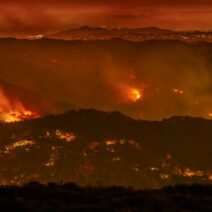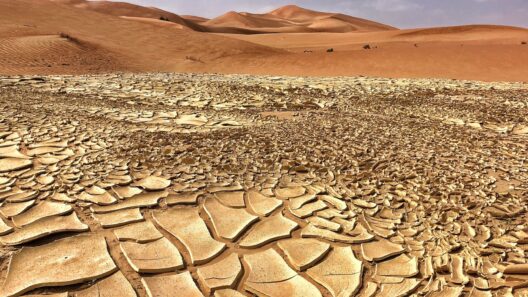The earth is a resplendent tapestry, each thread representing a unique organism that contributes to the grand narrative of life. However, this intricate design is unraveling at an alarming pace due to the relentless encroachment of climate change, leading to an unprecedented biodiversity crisis. As ecosystems teeter on the edge of collapse, we must understand the mechanisms behind this crisis and the urgent need for conservation if we are to preserve the vibrant diversity of life on our planet.
At its core, biodiversity encompasses the variety of life forms in an environment, ranging from the smallest microorganisms to the grandest mammals. Each organism, no matter how minute, plays a critical role in maintaining ecosystem equilibrium. Like a symphony, the harmonious interplay among species ensures resilience against environmental fluctuations. However, human activity has transformed longstanding landscapes and ecosystems, introducing discord into this once cohesive ensemble.
The most pernicious element of climate change is its insidious ability to alter habitats. Rising temperatures, a foremost consequence of greenhouse gas emissions, disrupt local climates, forcing species to adapt—or face extinction. Imagine a delicate butterfly, the Monarch, whose migration patterns have been dictated by seasonal climate cues for millennia. As temperatures shift, this remarkable creature finds its migratory routes increasingly hazardous. With food resources vanishing and breeding grounds decimated, the Monarch’s fate hangs precariously in the balance.
Moreover, the phenomenon of habitat loss exacerbates these challenges. Forests, wetlands, and grasslands are being ravaged for urban development, agriculture, and resource extraction. The metaphorical chainsaw of progress indiscriminately slices through biodiversity-rich areas, transforming verdant expanses into barren landscapes. In the process, iconic species like the orangutan, which rely on dense forest ecosystems, confront the stark reality of diminishing homes. These creatures are not merely losing habitats; they are losing their cultural legacies, their very essence.
Climate change also catalyzes the emergence of invasive species, which thrive in altered environments. These interlopers exploit ecological niches with shocking efficiency, often outcompeting native species for resources. Picture a once-thriving pond that has become a battleground for survival. The introduction of an invader—a voracious plant or a rapidly reproducing fish—disrupts the established order, leading to a cascading effect that threatens countless indigenous organisms. The delicate balance of nature is upended, and with it, the unique narratives of local ecosystems are lost.
Furthermore, the oceans are not immune to the dire consequences of climate change. Ocean acidification, resulting from increased carbon dioxide absorption, poses a grave threat to marine biodiversity. Coral reefs, often described as the rainforests of the sea, are succumbing to bleaching events as water temperatures rise. These vibrant underwater ecosystems, teeming with life, are akin to bustling metropolises. When they falter, vast networks of marine life—fishes, crustaceans, and mollusks—lose their homes and livelihoods, leading to profound impacts on global fisheries and local economies.
In this era of ecological peril, the stories of extinction are becoming more frequent and tragic. The International Union for Conservation of Nature warns that approximately 1 million species face extinction in the coming decades. These numbers are not just statistics; they are the lost chapters of our planet’s history—ecosystems that will never flourish again, unique genetic libraries rendered unreachable. As these species vanish, so too do the invaluable ecosystems services they provide, such as pollination, water purification, and climate regulation.
The tangible repercussions of the biodiversity crisis ripple across the globe. As fisheries collapse and pollinator populations dwindle, food security becomes an ever-pressing concern. The intricate connections nestled within ecosystems mean that the loss of even a single species can culminate in a domino effect, dismantling livelihoods and destabilizing communities dependent on these natural resources. Therefore, the fate of biodiversity is intimately intertwined with human well-being. Ignoring this crisis is akin to ignoring the very foundation of our survival.
Fortunately, the narrative is not entirely bleak. Awareness of the biodiversity crisis is surging, igniting a global movement toward conservation and restoration efforts. Protected areas, restored habitats, and innovative approaches to sustainable land use are becoming prevailing themes in the quest for ecological resilience. Initiatives like rewilding aim to restore ecosystems by reintroducing keystone species that once played crucial roles in their environments. As humans seek to mend the tapestry of life, there is hope that nature may begin to recover, stitching together the frayed edges of its narrative.
In conclusion, the biodiversity crisis propelled by climate change is an urgent call to action. As stewards of this planet, humanity must acknowledge that our fates are inextricably linked to the health of the ecosystems that cradle us. An investment in conservation today is an investment in the vibrant future of our world—a future where the irreplaceable wealth of biodiversity thrives amidst the challenges of climate change. Protecting our natural heritage is not merely a duty; it is a necessity for our sustained existence and the flourishing of generations yet to come. May we rise to the challenge and weave a new chapter in the story of life on Earth, where nature is revered and biodiversity is cherished.







